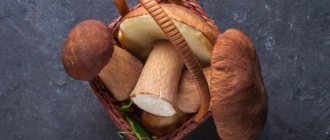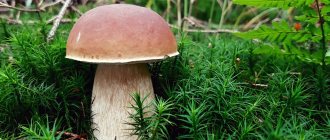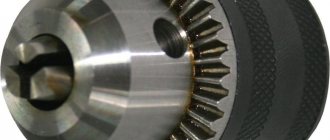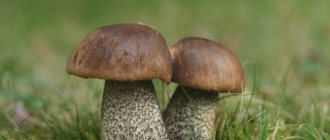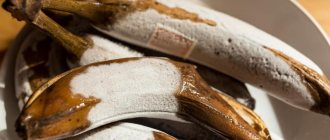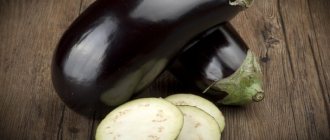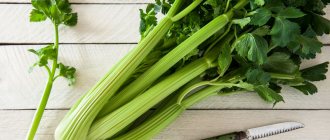Mushroom picking is a great opportunity to freshen up, take a walk through the forest and take a break from the hustle and bustle of the city. They go well with various types of meat, poultry and vegetables, and can also serve as an independent dish. After the mushrooms have been collected and everyone has returned home, the next stage begins - their cleaning and processing. In order to clean them correctly and efficiently, you need to know the basic rules and methods for processing such products.
General rules and recommendations for cleaning mushrooms
Mushrooms are a perishable product. After cutting, they quickly become flabby and lose their aroma. It will not be possible to put the baskets somewhere away and remember about them after 3-4 days. In addition, worms from already damaged specimens quickly move to still clean ones.
It is advisable to clean and process the collected mushrooms on the same day.
Basic tips for cleaning mushrooms:
- Start cleaning mushrooms while still in the forest, removing large debris - stuck twigs, needles, leaves. The base is cleared of sand and earth. You can cut off a little to check if the mushroom is wormy, and not take home something that you still have to throw away.
- Sort them out. Different types clean differently.
- It is more convenient to peel mushrooms with a small sharp knife with a thin blade. It will cut the flesh but not crumble it.
- Wear gloves. During the process of peeling mushrooms, your fingertips quickly darken.
- When washed, mushrooms absorb water, partially losing their taste. If possible, limit yourself to dry cleaning. If they are not very dirty, you can simply wipe them with a damp cloth, otherwise, go over them with a soft-bristled brush. When the dirt does not come off, scrape it or cut off these areas with a knife.
Where possible, it is best to limit mushrooms to dry cleaning.
Is it necessary to soak boletus mushrooms?
To prevent the collected boletuses from darkening too quickly, you need to immerse them in slightly salted and always cold water. This method is only suitable for those specimens that do not plan to be dried and frozen.
If forest fruits need to be dried, then they cannot be soaked or even washed. Wet specimens take too long to dry and most often rot.
Advice! If the boletus mushrooms become dark and spoiled, you should throw them away immediately so as not to risk your health. Mushroom poisoning is the most severe type of intoxication.
How to properly clean different types of mushrooms
The nuances of cleaning are determined mainly by the structural features of the mushrooms (spongy or lamellar).
White
You won't have to tinker with them for a long time. Just wipe the caps with a damp cloth and scrape off the stuck grains of sand with a knife. Cut off the base of the leg along with the ground.
Porcini mushrooms are not only very tasty, they are also a pleasure to peel
Boletus and boletus
Worms are especially fond of them. First check this by cutting off the base of the stem. Then separate it from the cap, scrape it with a knife, removing the black “patina”, and quickly rinse in water. Wipe the hats with a damp cloth, cut them in half, also checking for worms. Cut off the sponge underneath. Firstly, it is in it that mosquito larvae most often settle, secondly, during the heat treatment it becomes unpleasantly slimy, and thirdly, it is very poorly digested.
When cleaning a boletus mushroom, be sure to cut both the stem and the cap to make sure that the mushroom is not wormy.
In very old mushrooms, the stems harden and become fibrous. It's better to throw them away.
Flywheels are cleaned in much the same way. They also remove the top layer of tissue from their darkened legs and remove the sponge. But you also need to remove the skin from the cap.
Many mushroom pickers neglect moss mushrooms, but they have a very good taste if you peel the cap
Butter
Their main feature is the stickiness of the skin on the cap. Dark marks on your hands take the longest to clean after cleaning, so be sure to wear gloves. When starting to clean, first cut the mushroom in half, making sure there are no worms in it, and cut off the base of the stem. Then remove the skin from the cap, picking it up at the edge. If you leave the skin on, the finished dish will turn out unsightly dark, bitter and unpleasantly slimy. You can’t soak boletus, as its taste disappears very quickly.
The main difficulty when cleaning boletus is to remove the skin from the slippery cap.
Video: recommendations for cleaning boletus and porcini mushrooms
Honey mushrooms
Collecting them in whole “families” is quite easy, and so is cleaning. There are practically no worms in young mushrooms. First you need to cut off the hardened base of the stem and pour cool water over the mushrooms so that it completely covers them, literally for a minute. Then vigorously, but without damaging the mushrooms, stir the contents of the container and add water to the top. Clean mushrooms float to the surface, all the dirt remains at the bottom. Then you just need to remove them with a slotted spoon and use a knife to cut off the “skirt” on the leg.
Honey mushrooms are small mushrooms, so it is more convenient to clean them “in bulk”
Champignon
It is strongly recommended not to even rinse them quickly in water, let alone soak them. They absorb water like a sponge, turning into a tasteless mass. In young mushrooms, they limit themselves to cutting off the base of the stem. For old ones (more than 5–7 cm in diameter), remove the “skirt” and skin (like from a butter dish, from the edge to the middle of the cap). On the legs, the weathered, darkened tissues are cut off with a knife; in large champignons they are hard, so it is better to remove them completely.
For champignons, you will have to limit yourself to dry cleaning only.
Video: process of cleaning champignons
Chanterelles
Their big advantage is the complete absence of worms. The caps are washed to remove grains of sand, soil particles and plant debris under running water. After this, the bottom of the leg is cut off, and if there are dark areas, they are scraped with a knife. To prevent the chanterelles from breaking during the cleaning process, they are first doused with boiling water - the mushrooms become more “elastic.”
Chanterelles are one of the cleanest mushrooms inside, but sometimes you have to tinker with the dirt on the caps
Oyster mushrooms
Only mushrooms with a cap diameter of 10 cm or less are suitable for eating. For the rest, it is extremely tasteless, and the leg is generally inedible. Oyster mushrooms growing on trees do not need to clean their caps from soil, sand, or other debris. The bottom of the legs is cut off, if there are any darkened areas, and the mushrooms are washed in running cool water.
Before cleaning, oyster mushrooms are “calibrated”, selecting mushrooms that are too large and unsuitable for food.
Russula
The stem and cap are separated, the darkened tissues are cut off from the former, and the latter are wiped with a damp cloth, removing visible debris. Then the russula are filled with water for 15–20 minutes to clean the spaces between the plates. Very carefully remove the skin from the caps - the russula crumble easily.
To clean the dirt from the intervals between the russula plates, it is recommended to soak the mushrooms for a short time
In specimens with red caps, even when the skin is removed, a bitter taste remains. To get rid of it, cook the mushrooms for 15–20 minutes, only then start cooking.
greenfinch
They look very similar to russula, which is why they are cleaned the same way. If there are a lot of mushrooms, pour hot, but not boiling (85–90°C) water over them for 5–7 minutes so that it just covers the mushrooms. Then, using a slotted spoon, vigorously stir the contents of the container - the mushrooms rub against each other, the dirt lags behind. Clean greenfinches can be caught with the same slotted spoon or you can add more water so that they float to the surface.
The greenfinch (also known as greenfinch) does not look very appetizing, the characteristic shade remains even after heat treatment
Milk mushrooms, valui (gobies) and saffron milk caps
They grow mainly underground, so they need to be thoroughly cleaned of soil particles and grains of sand. To effectively get rid of debris, mushrooms are soaked in cold water for 1–3 days (it needs to be changed 3–4 times a day). The same technique helps to neutralize the bitter taste inherent in milk mushrooms and gobies. They are first cut in half to reject wormy specimens.
How long to soak boletus mushrooms
If the boletus is slightly wormy, you can soak it in water. To do this, add 40 g of salt to 1 liter of water, then pour the resulting solution into forest fruits for an hour. All worms and insects will leave the mushroom pulp during this time.
It is not always possible to easily remove contaminants from the surface of forest fruits. In this case, they are soaked in water. Half an hour is enough for the dirt to come off easily. But it is worth remembering that only strong and young specimens can be left. Old boletus and boletus absorb liquid well, which makes them limp.
You should not soak boletus mushrooms overnight, as they have a spongy structure that absorbs liquid abundantly. After this, they lose their high taste and density.
If the crop was harvested near highways or an industrial enterprise, then there is a high probability that the mushrooms contain hazardous metals and salts that they absorb from the soil. Experts recommend not collecting such specimens or, as a last resort, soaking them, but the process should not be lengthy. Maximum time is one hour. During the process, you need to change the water twice in order to clean the product as much as possible from the harmful substances contained in the composition.
If boletus and aspen mushrooms are collected in an ecologically clean place, deep in the forest or on the edges of the mushrooms away from the roadway, then there is no need for soaking, since the pulp of the mushrooms is not bitter.
When to wash and soak mushrooms
It is best to avoid washing mushrooms if possible. Spongy (and some lamellar) varieties quickly absorb moisture, losing flavor. The best option is dry cleaning and wiping with a damp cloth.
All so-called milkweeds need soaking. Cuts of such mushrooms exude white (only saffron milk caps have orange) juice and are used for pickling. These include milk mushrooms, valui, and tremors. Soaking helps repel unpleasant bitterness.
They are filled with cold water for at least a day, maximum for three, changing it at least once a day (preferably 3-4). For little-known bitters and pigs, the period increases to 4–7 days. If you add salt to the water (about a tablespoon per liter), you will get rid of the worms in the pulp.
After soaking the mushrooms, do not forget to regularly change the water in the container at least once a day
It is also recommended to soak Polish mushrooms. Any damaged areas quickly turn blue. When cooked, the liquid turns out almost black. Soaking for 3-4 hours allows the mushrooms to return to a more aesthetically pleasing light color.
The slightest damage to the Polish mushroom leads to its flesh turning blue
Video: the process of soaking mushrooms
General information
Each type of mushroom is cooked separately and may require different levels of cleaning. It is better to throw away copies of accessories that you already have doubts at home. The same applies to low-quality mushrooms. Urgency is also important in the sense that among the mushrooms there may be worms. If there are several mushrooms spoiled by worms in the basket, the parasites can spread to all the others, greatly reducing the number of delicacies obtained. Processing of mushrooms must be completed no later than 6 hours, otherwise the proteins in them will begin to disintegrate.
Important! Start cleaning the mushrooms dry. Water makes some mushrooms very slippery, others loose and brittle. In any case, it is easier to remove debris from dry mushrooms.
Preparation
Mushrooms must be sorted, taking into account:
- How polluted are they?
- What kind are they?
- You will have to dry them or cook them.
- Are there any wormholes?
- Product Dimensions.
Cleaning begins no later than six hours after the trophies of a quiet hunt are brought from the forest. If it is not possible to immediately begin cleaning, then the raw materials must certainly be placed in the refrigerator so that they do not spoil.
Advice: special attention should be paid to worm spots. It is better to cut them out immediately at the place where the mushrooms are collected. Worms easily crawl from one mushroom to another, spoiling the harvest. There is an opinion that mushrooms grown on special mushroom farms cannot have worm infestations. However, this is a misconception. Such products should also be carefully inspected for any damaged parts. To be sure to free them from uninvited guests, you need to place them in salted water for a short time. The worms themselves will leave the pulp, which is tasteless to them in this case.
